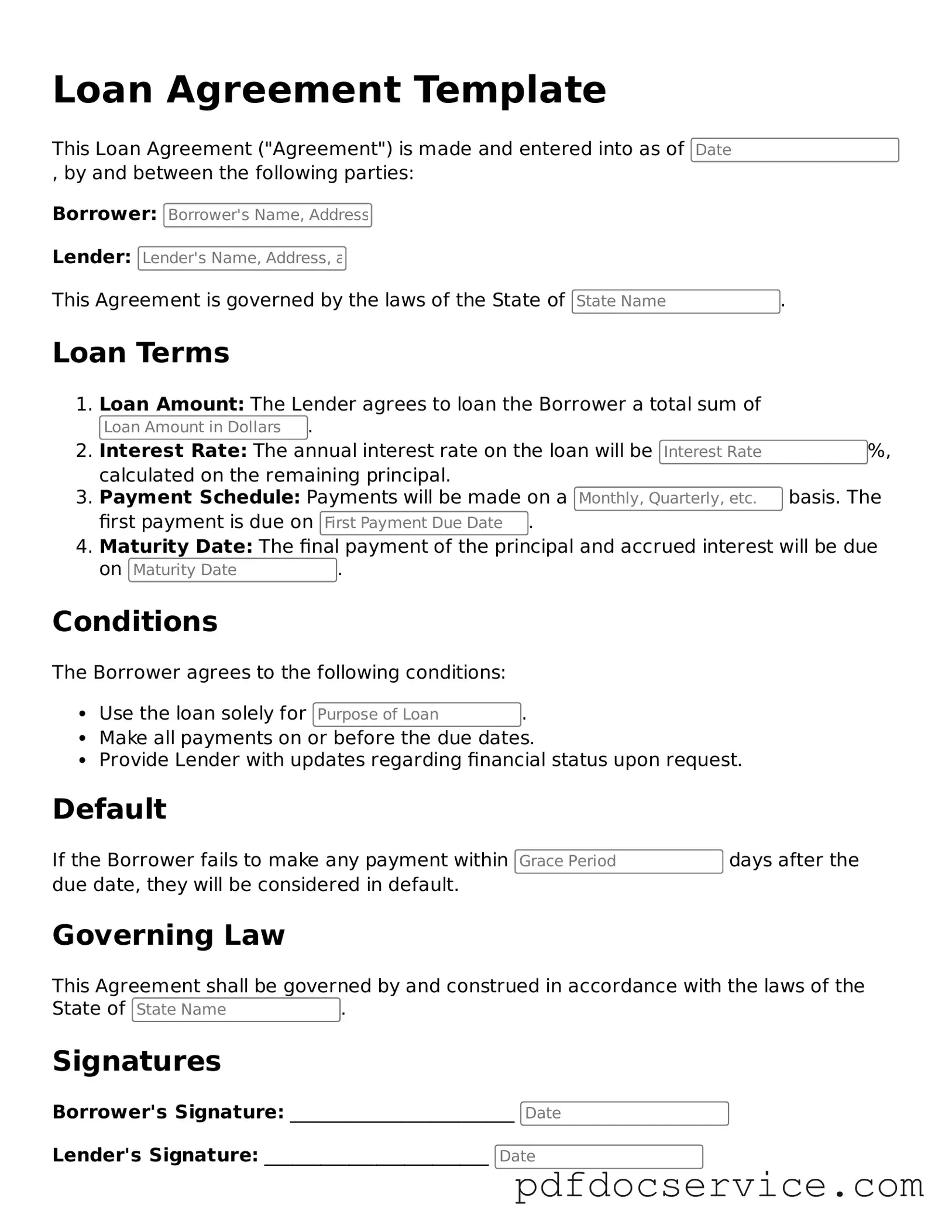When individuals or businesses seek financial assistance, a Loan Agreement form becomes an essential tool in defining the terms of the borrowing arrangement. This document outlines critical components such as the loan amount, interest rate, repayment schedule, and any collateral involved. By clearly detailing the obligations of both the lender and borrower, the agreement serves to protect the interests of both parties while establishing a clear framework for the transaction. It also addresses potential scenarios such as default and the remedies available to the lender, ensuring that all parties understand the consequences of non-compliance. Additionally, the Loan Agreement form may include provisions for prepayment options and late fees, offering flexibility and clarity in the borrowing process. Overall, this form not only facilitates trust between the lender and borrower but also helps to prevent misunderstandings that could lead to disputes down the line.
